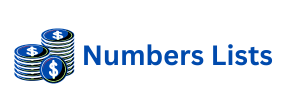In today’s dynamic digital landscape, effective content writing is paramount for online visibility. Businesses and individuals strive to connect with their target audiences. They achieve this by delivering valuable, engaging, and highly relevant information. Semantic SEO has transformed how content is created and optimized. It moves beyond simple keyword stuffing. Instead, it focuses on understanding user intent and entity relationships. This approach creates a richer, more comprehensive user experience. High-quality content not only informs but also builds trust and authority. It is a cornerstone of any successful digital marketing strategy. Adopting a semantic approach ensures your content answers user questions thoroughly. It also establishes your site as a comprehensive resource. This leads to better search engine rankings and sustained organic traffic growth over time.
Mastering Content Writing for Semantic SEO Success
Semantic SEO is about much more than just keywords. It involves comprehending the underlying meaning of search queries. It also understands how different topics and entities relate. When crafting content, consider the broader context of your subject. Think about related questions users might ask. Explore subtopics that enhance the main theme. This holistic view helps create content that search engines love. Google’s algorithms are increasingly sophisticated. They reward content that provides deep insights and covers a topic comprehensively. Your content should answer “what,” “why,” and “how” questions. It should anticipate further user needs. This method naturally incorporates a wider array of relevant terms. It signals topical authority to search engines. Such content serves your audience better. It also improves your site’s overall search performance. This strategic content planning is vital for modern digital success.
The Power of Strategic Content Writing and Entity Optimization
Entity optimization is a core component of semantic content writing. An entity can be a person, place, thing, or concept. Search engines recognize and categorize these entities. They understand their relationships to one another. By explicitly mentioning and elaborating on relevant entities within your content, you provide crucial context. This helps search engines accurately interpret your content’s meaning. It then matches it with appropriate user queries. For instance, if writing about “content marketing,” you might also mention “SEO,” “social media,” “email marketing,” and “analytics.” These are related entities. Each adds depth and breadth to your topic. Optimizing for entities enhances relevance. It expands the potential search queries your content can rank for. This meticulous approach drives more qualified traffic. It ensures your content is seen by the right people at the right time. Your content becomes a hub of information.
Boosting Authority with Thoughtful External Backlink Strategies
Building online authority is crucial for any website. One of the most powerful ways to achieve this is through strategic backlink acquisition. An External Backlink acts as a vote of confidence from another website. When reputable and relevant sites link to your content, it signals to search engines that your content is valuable. It indicates it is trustworthy and authoritative. This significantly boosts your site’s credibility. It can improve your search engine rankings. However, the quality of these backlinks is far more important than quantity. Focus on earning links from sites that are highly respected in your niche. Guest posting, broken link building, and creating evergreen content are effective tactics. These strategies naturally attract valuable external links. High-quality backlinks are a direct indicator of your content’s perceived value on the web. They are essential for long-term SEO. This proactive approach strengthens your digital footprint.
Enhancing Site Structure Through Effective Internal Backlink Implementation
While external backlinks bring authority from other sites, internal links are equally vital. They help search engines understand your website’s structure. They also improve user navigation. An Internal Backlink connects one page of your website to another. This network of links distributes “link equity” throughout your site. It helps important pages rank higher. Thoughtful internal linking guides users to related content. It keeps them engaged on your site for longer. This reduces bounce rates and increases page views. When linking internally, use descriptive anchor text. This tells both users and search engines what the linked page is about. For example, if you have a blog post on “SEO basics,” link to it from other relevant articles using anchor text like “learn more about SEO basics.” A well-organized internal link structure is a roadmap. It benefits both user experience and search engine crawling efficiency. It helps search engines discover new content.
Key Principles for Modern Content Writing and Digital Visibility
Effective content writing in the age of semantic SEO demands a multi-faceted approach. It requires a deep understanding of your audience. You must research their search intent. Comprehensive content creation is key. It needs to cover topics broadly and deeply. Strategic backlink building, both external and internal, strengthens your online presence. Prioritize user experience above all else. Ensure your content is easy to read and navigate. It must be mobile-friendly and accessible. Regularly update your content to keep it fresh and relevant. Monitor performance metrics to refine your strategy. Consistent effort in these areas will lead to sustainable organic growth. It will also establish your brand as a respected authority. This holistic view is crucial. It ensures lasting success in a competitive digital world.
